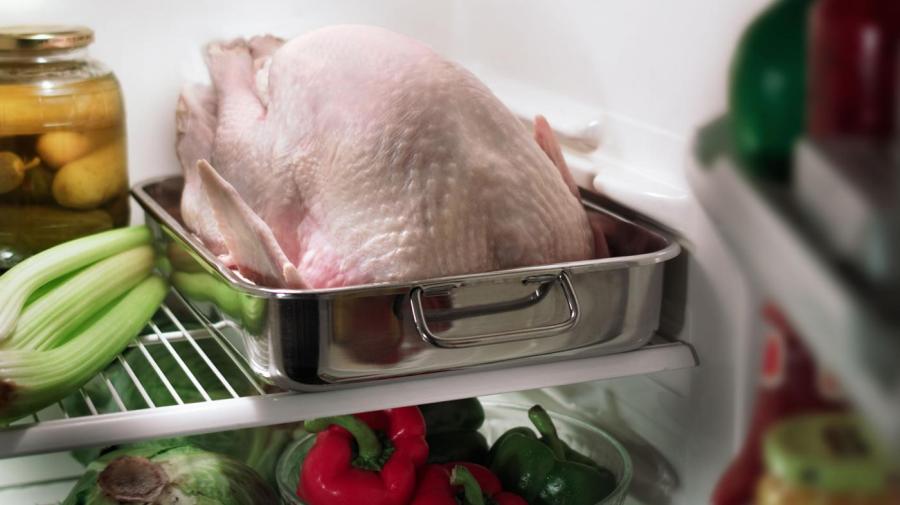How Can You Tell If Raw Turkey Is Bad?

Signs of spoiled raw turkey include a foul odor, slimy texture and an unnatural coloration. When raw turkey is safe to cook and consume, it has a very mild odor similar to that of raw chicken. Spoiled turkey has a strong, gamey smell, and it develops a slimy or sticky texture.
The color of raw turkey meat is another useful freshness indicator. Depending on the part of the turkey from which it comes, turkey meat is described as “light” or “dark.” According to the Library of Congress’ Science Reference Services, the light sections come from well-rested muscles, such as the turkey’s breast, while the heavily used muscles of the legs and wings are noticeably darker. After cooking, the light and dark portions of a turkey appear light brown and dark brown, respectively. Raw turkey meat has pink, lavender and blue undertones. The skin is pale and creamy. Colors indicating spoiled turkey meat include red, green and yellow.
Spoiled turkey is a breeding ground for potentially dangerous bacteria, including Clostridium perfringens. According to the Centers for Disease Control, this bacterium causes more food poisoning than any other. Spoiled turkey must be immediately discarded to reduce the risk of cross-contamination with other foods. The best way to kill residual bacteria on hard kitchen surfaces is to wash them with hot, soapy water or spray them with a food-safe antibacterial cleanser.





